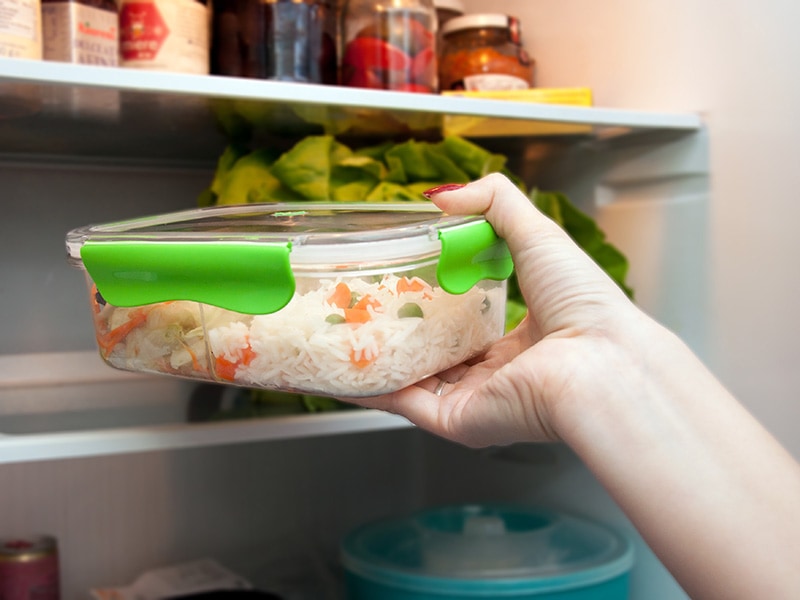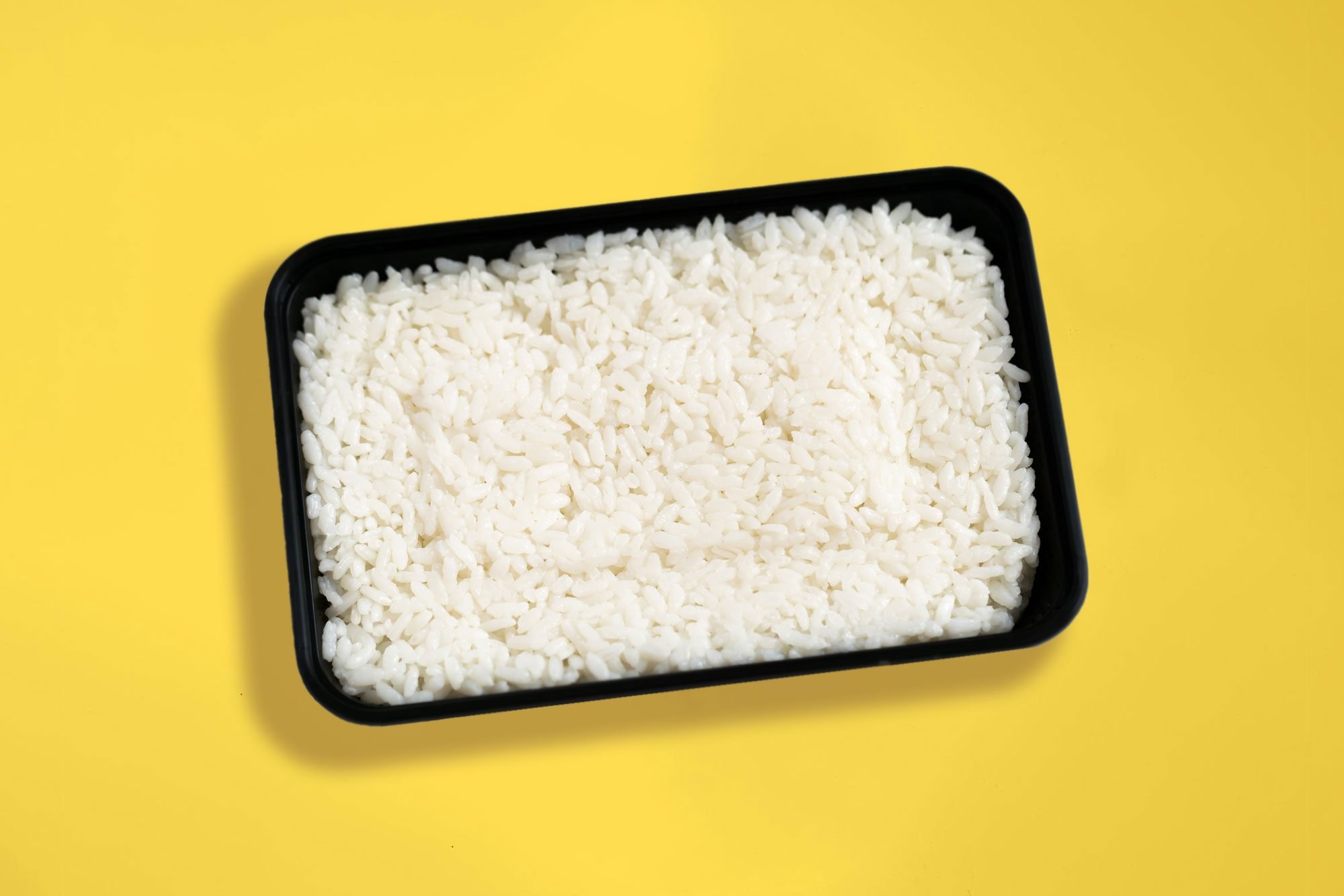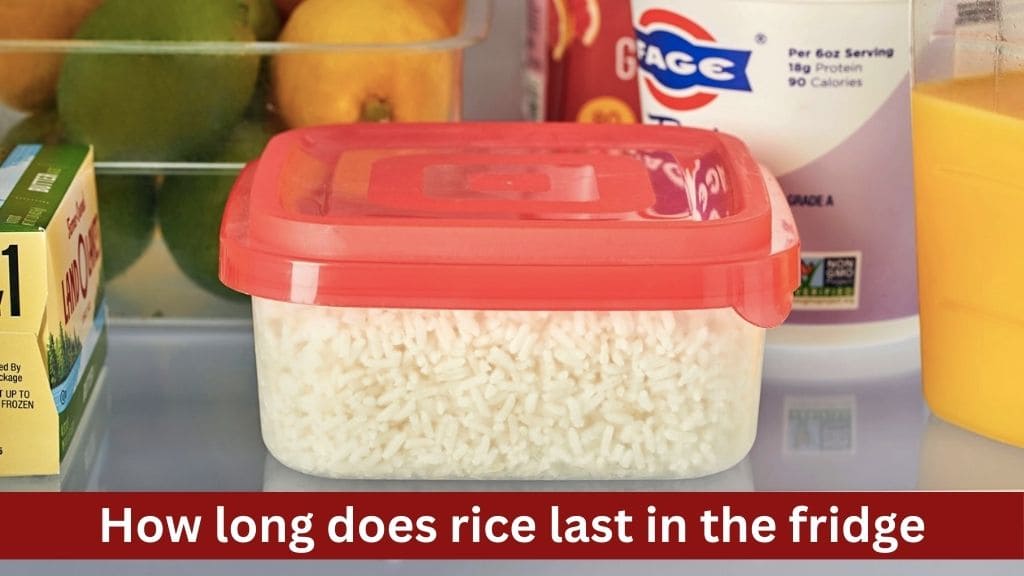Rice is a staple food for billions of people around the world, prized for its versatility, affordability, and nutritional value. Whether it’s fluffy white rice, aromatic jasmine rice, or nutty brown rice, many of us cook more than we need for a single meal, leading to leftovers that need to be stored properly to maintain freshness and safety. In this comprehensive guide, we’ll delve into the question: How long does rice last in the fridge?
Understanding Rice Storage

Before we explore the shelf life of cooked rice in the fridge, let’s first understand how different types of rice are stored and their respective longevity.
Uncooked Rice Storage
Uncooked rice storage is crucial for maintaining its quality and extending its shelf life. Here’s a deeper look into how different types of uncooked rice should be stored:
Dry, Unopened Rice
Dry, unopened rice, when stored properly, can last indefinitely. It’s essential to keep it in a cool, dry place away from moisture and direct sunlight. Airtight containers, such as jars or sealed bags, are ideal for preserving the freshness of unopened rice. White rice varieties, including arborio, basmati, and jasmine, can maintain their flavor and nutritional value for up to 30 years in proper storage conditions.
Opened White Rice
Once opened, white rice should be transferred to an airtight container to prevent moisture absorption and pest infestation. It’s recommended to store opened white rice in a cool, dry pantry or cupboard away from heat sources. While white rice can last for one to two years in proper storage conditions, it’s essential to check for any signs of spoilage, such as off odors or insect infestation, before use.
Brown Rice
Brown rice has a shorter shelf life compared to white rice due to its higher oil content, which can lead to rancidity over time. After opening, brown rice should be stored in an airtight container in a cool, dark place to preserve its quality. While brown rice typically lasts for about six months, it’s essential to monitor its freshness regularly and discard any rice that shows signs of spoilage, such as a stale odor or changes in texture.
Cooked Rice Storage
Optimal Conditions
Cooked rice should be stored in the refrigerator promptly after cooking. Ideally, it should be cooled down within two hours of cooking to minimize bacterial growth. The optimal temperature for storing cooked rice in the fridge is below 40°F (4°C).
Factors Affecting Longevity
Several factors influence how long cooked rice will last in the fridge:
- Cooking Method: The way rice is cooked can impact its shelf life. Rice cooked with excess water or left uncovered during cooking may spoil more quickly.
- Cooling Time: Rapidly cooling cooked rice is crucial to prevent bacterial growth. It’s recommended to spread the rice out in a shallow container to speed up the cooling process.
- Storage Container: Using airtight containers is essential to prevent moisture loss and contamination. Shallow containers allow for better airflow, aiding in cooling and preserving freshness.
- Fridge Conditions: Maintaining a consistent refrigerator temperature and avoiding overcrowding can help prolong the shelf life of cooked rice.
Signs of Spoilage
Before consuming cooked rice, it’s essential to check for signs of spoilage, including:
- Odor: Spoiled rice may have a sour or off-putting smell.
- Texture: Rice that has gone bad may become mushy, slimy, or grainy in texture.
- Appearance: Discoloration or mold growth on cooked rice indicates spoilage and should be discarded.
Risks of Consuming Spoiled Rice
Eating spoiled rice can lead to foodborne illnesses, such as food poisoning. Bacillus cereus contamination, commonly known as “fried rice syndrome,” can occur if cooked rice is not stored or reheated properly. Symptoms of food poisoning include nausea, vomiting, diarrhea, and abdominal cramps.
Best Practices for Storage
To maximize the shelf life of cooked rice and ensure food safety:
- Promptly refrigerate cooked rice within two hours of cooking.
- Use shallow, airtight containers to store cooked rice in the fridge.
- Avoid storing rice at room temperature for extended periods.
- Reheat cooked rice thoroughly to kill any bacteria before consumption.
Risks of Consuming Spoiled Rice

Consuming spoiled rice can lead to various health risks, including:
Unpleasant Taste
When rice begins to spoil or deteriorate, it can develop an unpleasant taste that significantly impacts its palatability. Here’s a deeper exploration of what causes rice to taste bad and how to recognize it:
Causes of Unpleasant Taste
Several factors can contribute to rice tasting bad:
- Spoilage: As rice spoils, it undergoes chemical changes that can produce off-flavors and odors. Bacterial growth, mold formation, or rancidity due to oxidation can all lead to unpleasant tastes.
- Contamination: Rice can pick up flavors and odors from other foods in the refrigerator if not stored properly. Improperly sealed containers or exposure to strong-smelling foods can result in rice absorbing undesirable flavors.
- Stale or Rancid: Over time, rice can become stale or rancid, especially if exposed to air or stored in suboptimal conditions. Stale rice may have a flat, dull taste, while rancid rice can have a bitter or sour flavor due to the breakdown of fats.
Recognizing Signs of Unpleasant Taste
To determine if rice has developed an unpleasant taste, use your senses to assess its quality:
- Smell: Sniff the rice for any unusual or foul odors. Spoiled rice may emit a sour, musty, or ammonia-like smell, indicating bacterial contamination or mold growth.
- Appearance: Visually inspect the rice for any signs of mold, discoloration, or unusual textures. Moldy spots, discolored grains, or slimy coatings are indicators of spoilage.
- Texture: Touch the rice to assess its texture. Spoiled rice may feel mushy, slimy, or overly dry, signaling deterioration or bacterial growth.
Risks of Consuming Rice with Unpleasant Taste
Consuming rice with an unpleasant taste poses several risks:
- Unsatisfactory Eating Experience: Spoiled or rancid rice can ruin the overall taste and enjoyment of a meal, leading to dissatisfaction and discomfort.
- Foodborne Illness: Ingesting spoiled rice can result in foodborne illnesses caused by harmful bacteria, molds, or toxins. Symptoms may include nausea, vomiting, diarrhea, abdominal cramps, and fever.
Prevention and Management
To prevent rice from developing an unpleasant taste and ensure food safety:
- Proper Storage: Store rice in airtight containers in a cool, dry place to prevent spoilage and contamination. Refrigerate cooked rice promptly and consume it within the recommended timeframe.
- Regular Inspection: Regularly check stored rice for signs of spoilage, such as odor, appearance, and texture. Discard any rice that shows signs of deterioration.
- Safe Handling: Practice good hygiene and safe food handling practices when preparing, storing, and serving rice to minimize the risk of contamination and foodborne illnesses.
Food Poisoning
Food poisoning is a serious health condition caused by consuming contaminated or spoiled food, including rice. Here’s a detailed explanation of food poisoning, its causes, symptoms, and preventive measures:
Causes of Food Poisoning from Rice
- Bacterial Contamination: Rice, especially cooked rice, can become contaminated with harmful bacteria such as Bacillus cereus if not stored or handled properly. B. cereus can proliferate in cooked rice left at room temperature for too long, leading to toxin production and foodborne illness.
- Mold Growth: Mold growth on rice, particularly when stored in humid or damp conditions, can produce toxins that cause food poisoning. Aspergillus species are common molds found on rice and can produce mycotoxins under favorable conditions.
Symptoms of Food Poisoning
- Nausea and Vomiting: Rice contaminated with B. cereus toxins can cause nausea and vomiting within a few hours of consumption.
- Diarrhea: Diarrheal illness may occur as a result of ingesting rice contaminated with bacterial or fungal toxins.
- Abdominal Pain: Severe abdominal cramps and discomfort are common symptoms of food poisoning.
- Fever: Some cases of food poisoning may be accompanied by fever and chills, indicating a systemic response to toxins or infection.
Risks and Complications
- Dehydration: Diarrhea and vomiting associated with food poisoning can result in dehydration, especially in vulnerable populations such as children and the elderly.
- Electrolyte Imbalance: Prolonged vomiting and diarrhea can disrupt electrolyte balance in the body, leading to complications such as electrolyte abnormalities and weakness.
- Secondary Infections: Severe cases of food poisoning may predispose individuals to secondary infections or complications, particularly if the immune system is compromised.
Prevention and Treatment
- Proper Storage: Store cooked rice in the refrigerator promptly after cooking to inhibit bacterial growth. Avoid leaving cooked rice at room temperature for extended periods.
- Hygienic Practices: Practice good food hygiene, including washing hands thoroughly before handling food and using clean utensils and surfaces.
- Reheating: Reheat leftover rice thoroughly to kill any bacteria present. Ensure that the rice reaches an internal temperature of at least 165°F (74°C) before consumption.
- Discard Spoiled Rice: Discard any rice that shows signs of spoilage, including unusual odors, mold growth, or sliminess.
Seeking Medical Attention
If you suspect food poisoning from rice consumption or experience severe symptoms such as persistent vomiting, diarrhea, or fever, seek medical attention promptly. Treatment may involve fluid replacement, supportive care, and, in severe cases, antimicrobial therapy.
Importance of Proper Storage
Prevention
Proper storage helps prevent contamination and spoilage, reducing the risk of foodborne illness. By storing rice in airtight containers and maintaining optimal temperature conditions, you can inhibit the growth of bacteria, molds, and other pathogens that can cause food poisoning.
Preservation
Correct storage methods help preserve the flavor, texture, and nutritional value of rice. Exposure to air, moisture, and light can accelerate the deterioration of rice, leading to staleness, rancidity, or loss of nutrients. Airtight containers and cool, dark storage areas help extend the shelf life of rice and maintain its quality over time.
Minimization of Waste
Effective storage practices minimize food waste by prolonging the freshness and edibility of rice. Properly stored rice is less likely to spoil prematurely, reducing the need for disposal and helping households save money on groceries. By maximizing the shelf life of rice through proper storage, you can minimize waste and contribute to sustainability efforts.
Flavor Preservation
Optimal storage conditions help preserve the natural flavor and aroma of rice, ensuring a pleasant culinary experience. Exposure to odors from other foods or environmental contaminants can impart undesirable flavors to rice, compromising its taste. Airtight containers and proper sealing prevent flavor transfer and maintain the integrity of rice’s taste and aroma.
Food Safety
Properly stored rice reduces the risk of foodborne illness and ensures food safety for consumers. Bacterial contamination, mold growth, and toxin formation can occur if rice is stored improperly, leading to gastrointestinal issues and other health problems. Following recommended storage guidelines helps mitigate these risks and promotes safer food consumption.
Longevity
Correct storage practices extend the shelf life of rice, allowing it to be stored for longer periods without compromising quality. Whether storing uncooked rice in a pantry or cooked rice in the refrigerator, maintaining optimal storage conditions helps prolong its usability and freshness. By maximizing longevity, you can enjoy rice dishes over an extended period and reduce the frequency of grocery shopping trips.
Best Practices for Storing Cooked Rice
:max_bytes(150000):strip_icc()/how-long-fridge-rice-GettyImages-503301964-7077be72731a44f69032672c8598cd92.jpg)
Storing cooked rice properly is essential to maintain its freshness, flavor, and safety. Here’s a detailed explanation of the best practices for storing cooked rice:
Prompt Refrigeration
Immediately refrigerate cooked rice within two hours of cooking to prevent bacterial growth and spoilage. Rice left at room temperature for extended periods can enter the “temperature danger zone” (40°F to 140°F or 4°C to 60°C), where bacteria multiply rapidly, increasing the risk of foodborne illness.
Shallow, Airtight Containers
Use shallow, airtight containers to store cooked rice in the refrigerator. Shallow containers allow for quicker cooling, reducing the time rice spends in the temperature danger zone. Airtight seals help prevent moisture loss and contamination, preserving the quality and freshness of the rice.
Proper Cooling Techniques
Spread cooked rice out in a thin layer in the storage container to facilitate faster cooling. Avoid stacking or compacting rice, as this can trap heat and delay the cooling process. Rapid cooling helps prevent bacterial proliferation and maintains the texture of the rice.
Refrigerator Placement
Place the container of cooked rice in the refrigerator promptly after cooling. Position it on a middle shelf where the temperature is most consistent, avoiding placement near the refrigerator door or in warm spots. Adequate airflow around the container promotes even cooling and helps maintain the rice’s quality.
Monitor Fridge Temperature
Regularly monitor the temperature of your refrigerator to ensure it stays below 40°F (4°C). A refrigerator thermometer can help you verify that the temperature remains within the safe range for food storage. Temperature fluctuations can affect the shelf life of cooked rice and other perishable foods.
Labeling and Dating
Label the container of cooked rice with the date of preparation to track its freshness and consumption timeline. Use adhesive labels or markers to indicate the date of cooking, allowing you to rotate older batches and prioritize their use before newer ones. Discard any cooked rice that exceeds the recommended storage duration.
Safe Reheating
When reheating cooked rice, ensure it reaches an internal temperature of at least 165°F (74°C) to kill any bacteria present. Use a food thermometer to verify the temperature and stir the rice thoroughly during reheating to ensure uniform heating. Avoid reheating rice multiple times, as this can increase the risk of bacterial contamination.
Conclusion
Understanding how long rice lasts in the fridge is essential for maintaining food safety and minimizing food waste. By following proper storage techniques and handling guidelines, you can enjoy leftover rice safely and deliciously. Remember to always check for signs of spoilage before consuming cooked rice, and when in doubt, it’s better to discard it than risk foodborne illness. With these tips in mind, you can make the most out of your rice dishes while prioritizing health and safety.

